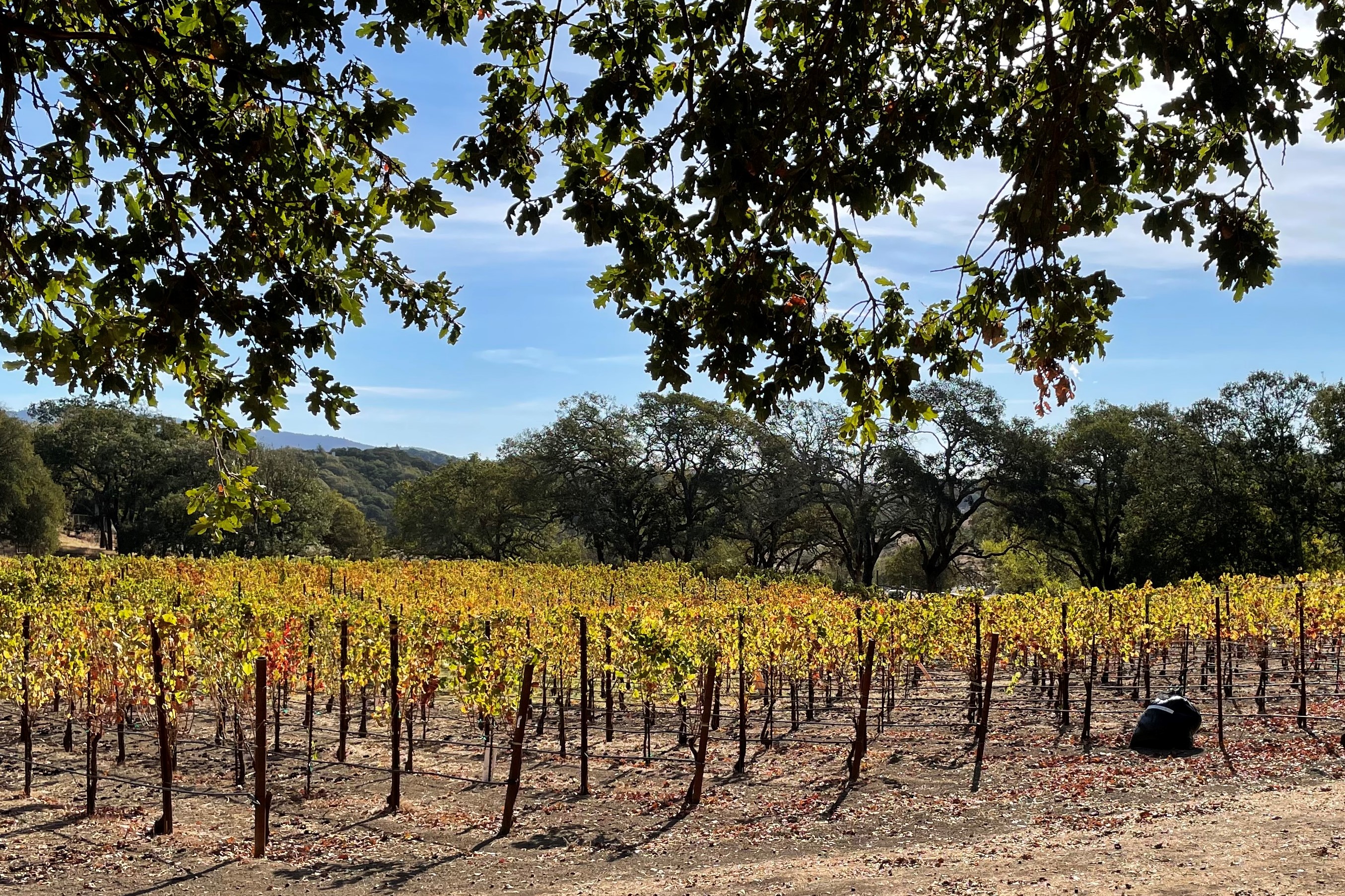Wineries Offering Virtual Wine Tastings - Wineries To Explore In Sonoma Valley
Wineries Offering Virtual Wine Tastings - Wineries To Explore In Sonoma Valley
Blog Article
Hidden Gem Wineries In Sonoma County - Best Winery Located In Sonoma
Wine tasting is an art that mixes sensory experience with an appreciation for the nuances of various varietals. How to evaluate flavors in winery wine tasting sessions is pivotal to greedy the complexities of wine.
Engaging in a wine tasting includes greater than merely sipping and savoring. It requires a centered approach to establish aromas and flavors that each wine presents. As you start, observe the wine's appearance, noting its color and readability. These visual cues typically recommend a wine’s age, grape variety, and even potential flavor profiles.
The next step within the tasting process is to swirl the wine in your glass. This motion releases fragrant compounds that are important for evaluation. Lean in and take a second to inhale deeply; the aromas can vary from floral and fruity to spicy and earthy. The nostril of the wine is simply as important as the palate, and recognizing scents performs a significant role in understanding the overall experience.
When taking your first sip, permit the wine to maneuver throughout your palate - Local Favorite Wineries In Sonoma. Discover the initial flavors that current themselves. Is the wine fruity, floral, or perhaps herbaceous? This initial style offers insight into what the wine is prone to categorical as you proceed to gauge it. The mouthfeel additionally contributes to the general flavor experience; it might be silky, tannic, and even effervescent.
Wineries With Unique Gamay Wines - Discovering Sonoma Area Wineries
As you continue tasting, pay attention to the wine’s stability. A well-balanced wine will harmonize acidity, sweetness, and tannins. If one element overwhelms the others, it might indicate a less desirable quality. Evaluating stability might help you identify how nicely the wine might pair with food.
Transitioning to the finish, think about how the flavors evolve as the wine lingers in your palate. A long, nice finish can indicate a high-quality wine, whereas a short or abrupt end would possibly suggest otherwise. Replicate on whether or not the flavors remain consistent or if new notes emerge as the wine settles. This development can reveal complexities and intricacies which may not have been apparent within the initial tasting.
Temperature is also a crucial factor in evaluating wine flavors. Different kinds of wine are optimally loved at specific temperatures. White wines typically shine when chilled, whereas pink wines typically perform greatest at room temperature. When tasting, ensure the wine is on the acceptable temperature to totally recognize its character.
Family-Friendly Wineries Near Sebastopol - Sebastopol Vineyard Experiences
Pairing food with wine can tremendously improve the tasting experience. Foods can influence the notion of flavors in wine, either highlighting sure characteristics or diminishing them. When evaluating flavors, contemplate how the wine interacts with completely different meals, noticing which flavors are amplified or muted (Wineries Near Santa Rosa).

Consider the influence of terroir as you interact in a winery tasting. Terroir encompasses the unique environmental elements that have an effect on grape growing, including soil composition, local weather, and geography. Understanding a wine's terroir can provide insight into its flavors and aromas, fostering a deeper appreciation for the alternatives made during its cultivation and production.
Schooling plays a elementary function in enhancing one's capacity to evaluate wine flavors. Learning about grape varieties, wine areas, and manufacturing wikipedia reference strategies can pave the method in which for more informed judgments during tastings. Moreover, attending workshops or classes can refine sensory skills and expand your flavor vocabulary, enabling you to articulate tasting notes extra effectively.
Finally, it's important to remember that evaluating wine flavors is a extremely personal experience. Individual preferences and perceptions will invariably shape one’s tasting journey. Enjoyment must be on the forefront, with the evaluation process acting as a device to enhance understanding and appreciation quite than create inflexible pointers.
Wineries Offering Virtual Wine Tastings - Scenic Wineries Of Sebastopol
In conclusion, mastering how to evaluate flavors in winery wine tasting classes includes a mix of sensory engagement, data, and practice. By learning to determine aromas, assess the steadiness, and respect the intricacies of flavor, wine enthusiasts can deepen their connection to each bottle they encounter. As with any art type, the extra one immerses themselves within the experience, the more they'll uncover and enjoy the vast world of wine.
- Begin by observing the wine's shade and readability, as these visual parts can hint at its flavor profile and getting older potential.
- Swirl the wine gently in your glass; this releases fragrant compounds, allowing you to raised identify the advanced scents associated with the wine.
- Take a deep inhale earlier than tasting, focusing on both main and secondary aromas to assemble insights on fruits, spices, and different nuances.
- When tasting, allow the wine to coat your palate; note the initial flavors, the mid-palate complexity, and the end as these levels can provide different flavor highlights.
- Pay attention to texture and mouthfeel, as elements such as tannin ranges, acidity, and sweetness contribute significantly to the general tasting experience.
- Evaluate flavors against normal wine characteristics; for pink wines, consider berry notes, oak affect, and natural tones, while whites might embrace citrus, stone fruits, and floral hints.
- Take notes during the tasting session to track your impressions, helping you to recollect and evaluate the different wines sampled.
- Talk About your findings with fellow tasters or winery workers, as sharing insights can improve understanding and appreciation of particular person flavors.
- Enable time for the wine to breathe; sometimes, flavors evolve and reveal new dimensions after being exposed to air.
- Experiment with food pairings during the tasting as they will dramatically alter how flavors are perceived, influencing total enjoyment.undefinedWhat should I search for when evaluating the aroma of wine throughout a tasting?
Start by swirling the wine in your glass to release its aromas. Deliver the glass to your nose and take a deep breath. Pay attention to the first scents you detect, as these are often the most outstanding. Look for fruit, floral, natural, or earthy notes and try to identify specific characteristics, which will deepen your understanding of the wine's complexity.
Wineries Featuring Seasonal Wine Events In Sonoma - Best Winery Located In Sonoma

How can I distinguish between totally different flavor profiles in wine?
Perceive that flavor profiles are often categorized as fruit, floral, herbaceous, spicy, or mineral. Take small sips and allow the wine to coat your palate. Discover the first flavors that emerge first and the delicate notes that observe. This layering is essential in distinguishing the wine's characteristics and can assist you to appreciate its unique profile.
Wineries Known For Sustainable Practices In Sonoma - Sonoma Wine Tasting Adventures
What is the significance of the wine's texture in a tasting?

The texture of the wine, also recognized as mouthfeel, performs an important position in how we understand flavors. Pay consideration to whether the wine feels easy, creamy, or gritty. The body of the wine (light, medium, or full) can improve or contrast with flavors, offering a more rounded experience throughout tasting.
How do I assess the steadiness of flavors in wine?
Stability in wine refers back to the harmony between acidity, sweetness, tannin, and alcohol. Take a second to assess whether these elements complement or intervene with each other. A well-balanced wine could have none of its parts overpowering the others, creating a pleasant tasting experience.
Romantic Winery Destinations In Sebastopol - Sebastopol's Vibrant Wine Scene
What role does temperature play in evaluating wine flavors?
Temperature can significantly impact the notion of flavors. Usually, red wines are best served barely beneath room temperature, whereas white wines get pleasure from being chilled. As the temperature modifications, the aromas and flavors can shift, permitting you to perceive completely different characteristics. It’s important to taste wine at its optimum temperature for true evaluation.
Interactive Wine Tasting Experiences In Sonoma - Wine Tasting And Vineyards In Sonoma
How can I enhance my tasting skills over time?
Practice is essential to bettering your tasting skills. Innovative Wine-Making Techniques In Sonoma Valley. Attend tastings, hold a journal of your experiences, and discover several sorts of wines to broaden your palate. Additionally, learning about wine manufacturing and grape varieties can present context that enhances your analysis course of, making you a extra knowledgeable taster.
Is there a specific order in which I should style the wines?
Wineries With Live Music Events Occasionally - Sonoma’s Lush Vineyard Landscapes
Yes, it’s advisable to style wines from light to full-bodied and dry to candy. This Sonoma vineyard tours. development prevents the stronger flavors from overshadowing the extra delicate ones, allowing you to fully appreciate every wine's traits and nuances without palate fatigue.
How can I evaluate the aftertaste of wine?
Celebrated Winemakers To Discover In Sonoma - Vines And Views In Sonoma Wine Country
The aftertaste, or end, is an important side of the wine-tasting experience. After swallowing, pay attention to how lengthy the flavors linger in your palate and whether or not they change. A lengthy, nice end is often an indicator of a high-quality wine, while a brief or disagreeable end could suggest otherwise.
Why is it necessary to notice the wine’s acidity throughout tasting?
Acidity contributes to the overall freshness and construction of the wine. Pay attention to the tingling sensation in your tongue; greater acidity can improve the wine's liveliness and steadiness out sweetness. Noting acidity helps determine the wine's versatility with food and its aging potential.
What ought to I do if I wrestle to establish particular flavors in wine?
Wineries With Unique Varietals - Vineyards In The Sonoma Region
Struggling to establish flavors is frequent, particularly for newbies. Focus on broader categories and describe what you'll be able to acknowledge, corresponding to candy or earthy notes. With practice, reading about different flavor profiles, and maybe using flavor wheels, you'll refine your senses and develop a more nuanced method to tasting. Report this page